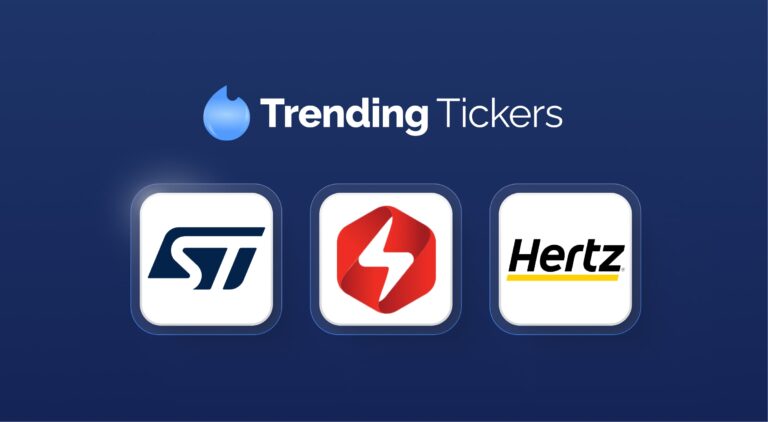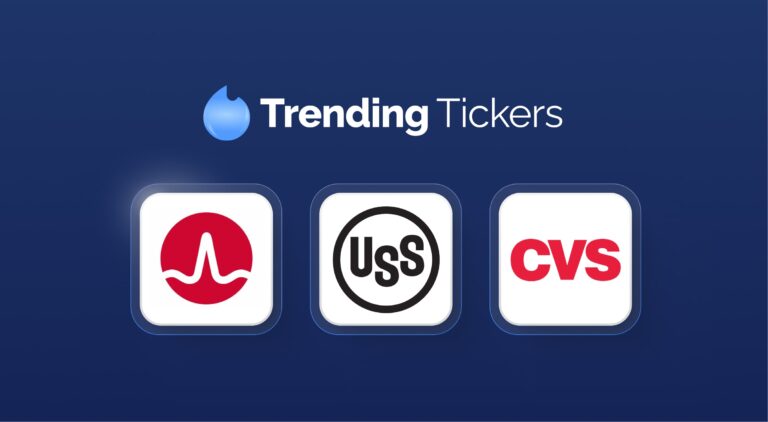“Tax loss harvesting” doesn’t have an exciting ring to it, but it’s powerful: a portfolio that actively harvests losses has been shown to outperform a similar buy-and-hold portfolio by 27 percentage points over 25 years (Arnott, Berkin, Ye, 2001), as well as by 0.85% per year in a different study (Chaudhuri, Burnham, Lo, 2020).
Wonky but potentially worth the effort, in other words.
So what is it, and how does it work?
Tax loss harvesting: when losers can be winners
If you’re slated to pay capital gains in a given year, you can offset those gains by the losses you’ve had. An investor employing tax loss harvesting turns this principle up a notch by being a bit more proactive about selling losers in order to offset gains.
The extent of “a bit more” is debated, but for most tax loss harvesters, it probably falls somewhere in between just selling only when they’d sell anyway, regardless of taxes, and selling enough to make sure that no capital gain goes un-offset. In other words, there’s some intent involved to harvest the loss above and beyond just selling a stock because you’ve soured on it.
Tax loss harvesting example
If you’re sitting on a $10,000 short-term capital gain, you might owe something like $3,500 in taxes if you’re a higher earner. If it’s a long-term gain, that might be $2,000 in tax liability. (Tax tables at the bottom of this article for reference.)
If you realize enough losses to offset your tax liability, for that year, you pay $0, instead of $3,500 or $2,000.
Easy enough, right?
Well, not really, as I’ll explain.
Tax loss harvesting logistics
Obviously, tax loss harvesting only works in taxable accounts. If you’re in the 0% tax bracket for capital gains, don’t bother with it; conversely, the higher your tax rate, the more it helps. Also, you must sell by the end of the year to “harvest” those losses against capital gains for that year, though you needn’t wait to the end of the year to harvest losses.
Tax loss harvesting lowers the cost basis of the investment, assuming you buy back in to something similar (more on this in a moment).
Short-term capital losses first offset short-term capital gains, and long-term capital losses first offset long-term capital gains. After this “netting” process, any overage in either then applies to any remaining capital gains you may have. And if you’ve still got more losses remaining – sorry – you can use them to offset $3,000 of income ($1,500 for married filers filing separately) that year.
And if you’ve still got losses, even after that? Fear not: you can carry them forward indefinitely.
Those are the rules. Strategy-wise, it’s considered plum to use long-term capital losses to offset short-term capital gains (i.e., to take them in years where long-term losses will meaningfully exceed long-term gains, leaving a large residual to offset short-term gains as well as $3,000 of income).
What’s a wash sale?
The intent of a tax loss harvester is to milk the loss to offset gain; as mentioned, what separates this type of selling from “regular” selling is that tax loss harvesters would often ideally still prefer to hold the investment they sold if possible.
So why not just sell at the end of year to take the loss, and buy right back?
This bridge has been crossed and, since 1921, has been forbidden.
The government’s intent of tax loss harvesting is to ease the sting of a capital loss (doing so makes capital markets a bit more inviting). Selling an investment to take the losses at the end of the year and buying it right back at the start of the new year is considered gaming the system.
The IRS terms this trick a wash sale (in the UK, it’s bed-and-breakfasting) and defines it as selling and then repurchasing either the same security or a “substantially identical” one within 30 days before or after the loss-harvesting sale, meaning a 60-day window altogether.
In other words, if you’re planning to harvest losses on XYZ Semiconductor by selling around Christmas, you can’t buy XYZ Semiconductor right back shortly after New Year’s (well you can, but you just can’t harvest the losses if you do).
You can wait for more than 30 days, or you can buy a different but similar-in-spirit investment – say, ABC Semiconductor.
Define “substantially identical”
For stocks, it’s easy – just buy a different stock and you’re good.
Usually bonds and preferred stock from the same company are not substantially identical, unless the preferred stock can easily be converted into an equivalent (in economic and voting terms) common stock investment.
Crypro bros, rejoice (for now): cryptocurrency has been functionally exempt from wash-sale rules, but this may change in the future the more security-like regulators deem cryptocurrencies to be.
| Tax gain harvesting: The IRS’ wash-sale rule does not apply to gains. This permits a quirky cousin of tax loss harvesting. If you’re sitting on capital gains and believe your capital gains tax rate is about to increase, you might “pre-sell” to lock in gains to-date at your currently low tax rate, and then buy right back. By resetting your cost basis, when you sell the stock “for real” one day, only the incremental gains from here will be taxed at your forthcoming higher rate. |
When would you want to use tax loss harvesting?
Now we get controversial.
Tax loss harvesting detractors (or at least those less excited about it) point out that by lowering your cost basis, tax loss harvesting only delays capital gains taxes.
Tax loss harvesting proponents say that that delay has value.
To offer a similar-in-spirit illustration given by Lincoln Fleming, author of the second article above, pretend you invest $20,000 into a stock. That stock declines in value to $11,000, meaning you lost $9,000.
You sell the stock and “realize” that $9,000 capital loss, which you harvest by offsetting some realized capital gains, and maybe a little income.
But you liked that investment, so you funnel the $11,000 sale proceeds into a similar-ish stock. Eventually, it rises to $20,000.
If you want to sell, you’ll now have a $9,000 capital gain.
So aren’t you just back where you started?
Yes and no.
Aside from the idea that a dollar saved now is better than a dollar saved later, Fleming offers a few extra benefits:
- The lower basis (i.e., $11,000 is your new basis in the above example, instead of the original $20,000) usually means bigger capital gains later, but not if you donate or bequeath the shares.
- Being able to use long-term capital losses (top tax bracket: 20%) to offset short-term capital gains (top tax bracket: 37% marginal rate) is a small tax rate arbitrage.
- If you tax loss harvest during high-earning years and finally sell the replacement investment when you retire and are potentially taxed at a lower rate, that’s a win.
- Relatedly, the shares can also “migrate” to a lower tax bracket if the government lowers tax rates, if the investor gifts shares to a lower tax-rate person, or if he or she physically moves to a lower tax-rate jurisdiction. (NB: Remember that the government can also raise capital gains tax rates.)
Should you use tax loss harvesting?
The hedgy answer is that it’s wisest to consult a tax professional. In this case, that’s got teeth: many factors affect the applicability of tax loss harvesting to your portfolio, such as the types of investments you’re buying, your intended use of them (i.e., whether you may want to donate/gift/bequeath them), your tax brackets now and in the future, your transaction costs (reminder: equity trades are free at BBAE), and amounts and timings of portfolio infusions and withdrawals.
There’s no one-size-fits all answer. (And, to be clear, I am not a tax advisor.)
Tax loss harvesting is most commonly done with stocks, although it can be done with funds, too – the fund is treated as a single security, though, which might frustrate some investors aware that within the fund are plenty of individual gains and losses that aren’t optimized by investors only able to harvest the fund’s overall market price loss. Generally, tax loss harvesting is easier with sector-specific or country-specific funds than with broad-market funds.
Financial technology is making tax loss harvesting more practical for investors with smaller accounts, and direct indexing (often done in managed accounts) enables tax loss harvesting on a security-by-security basis.
Whether tax loss harvesting applies to you is idiosyncratic, but in broad strokes, it could be worth considering if:
- You are truly about ready to sell a losing investment anyway (although this may not be quite intentful enough to qualify as “harvesting” to purists)
- You expect to be in a lower tax bracket in retirement
- You are a purist and have a similar – but not “substantially identical” – replacement investment in mind
- You are a regular rebalancer
- You hold stocks
- You are a direct indexer
| 2024 US Long-Term Capital Gains Tax Rates by Income | ||
| Tax Rate | Single | Married; filing jointly |
| 0% | Up to $47,025 | Up to $94,050 |
| 15% | $47,026 to $518,900 | $94,051 to $583,750 |
| 20% | $518,900+ | $583,750+ |
| 2024 US Short-Term Capital Gains Tax Rates (US Ordinary Income Marginal Tax Rates) by Income | ||
| Tax Rate | Single | Married filing jointly |
| 10% | $0 to $11,600 | $0 to $23,199 |
| 12% | $11,600 to $47,149 | $23,200 to $94,299 |
| 22% | $47,150 to $101,524 | $94,300 to $201,049 |
| 24% | $100,525 to $191,949 | $201,050 to $383,899 |
| 32% | $191,950 to $243,724 | $383,900 to $487,449 |
| 35% | $243,725 to $609,350 | $487,450 to $731,200 |
| 37% | $609,350+ | $731,200+ |
| A 3.8% Net Investment Income Surcharge Applies to Taxpayers | |||
| Single | Married filing jointly | Married filing separately | Head of household |
| $200,000 | $250,000 | $125,000 | $200,000 |
Source: IRS Internal Revenue Bulletin 2023-48

Disclaimer: This article is for informational purposes only and is neither investment advice nor a solicitation to buy or sell securities. All investment involves inherent risks, including the total loss of principal, and past performance is not a guarantee of future results. Always conduct thorough research or consult with a financial expert before making any investment decisions. Neither the author nor BBAE has a position in any investment mentioned.













